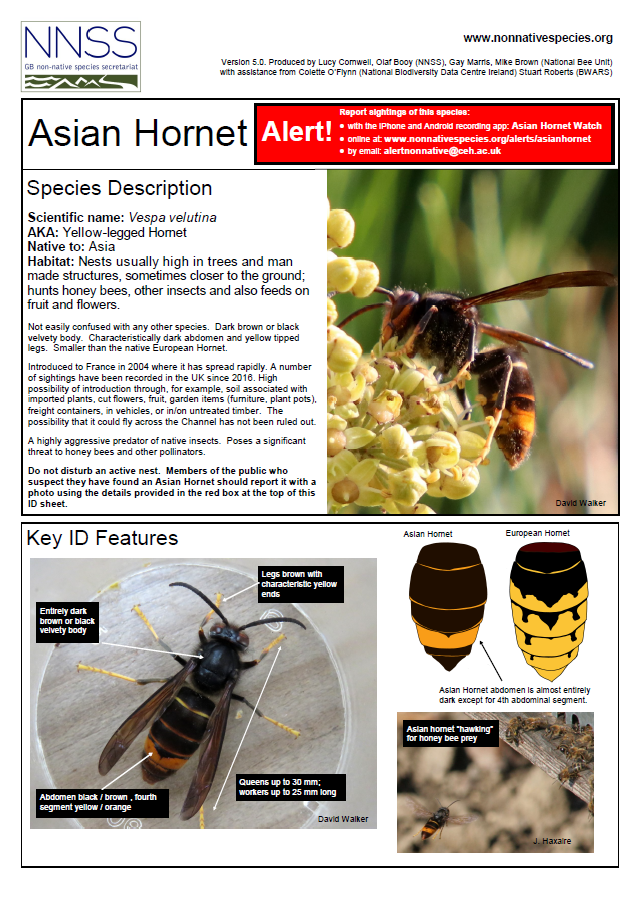Asian Hornets
| Scientific name: |
Vespa velutina |
| AKA: |
Yellow-legged Hornet |
| Native to: |
Asia |
| Habitat: |
Nests usually high in trees and man made structures, sometimes closer to the ground; hunts honey bees, other insects and also feeds on fruit and flowers. |
Alert! Report sightings of this species:
with the iPhone and Android recording app: Asian Hornet Watch
online at: https://www.nonnativespecies.org/non-native-species/species-alerts/#Species_53
by email: alertnonnative@ceh.ac.uk
Not easily confused with any other species. Dark brown or black velvety body. Characteristically dark abdomen and yellow tipped legs. Smaller than the native European Hornet.
Introduced to France in 2004 where it has spread rapidly. A number of sightings have been recorded in the UK since 2016. High possibility of introduction through, for example, soil associated with imported plants, cut flowers, fruit, garden items (furniture, plant pots), freight containers, in vehicles, or in/on untreated timber. The possibility that it could fly across the Channel has not been ruled out.
A highly aggressive predator of native insects. Poses a significant threat to honey bees and other pollinators.
Do not disturb an active nest. Members of the public who suspect they have found an Asian Hornet should report it with a photo using the details provided in the red box at the top of the ID sheet.
Field Signs
Active April-November (peak August/September). Mated queens over winter singly or in groups, in various natural and man-made harbourages – underneath tree bark in cavities left by beetle larvae, in soil, on ceramic plant pots – potentially any small, well-insulated refuge. Makes very large nests in tall trees in urban and rural areas, but avoids pure stands of conifers. Will use man made structures (garages, sheds etc.) as nesting sites.
For more information, view this Asian Hornet Information Sheet:
